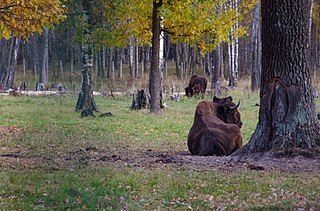
The Battle of Vaslui was fought on 10 January 1475, between Stephen III of Moldavia and the Ottoman governor of Rumelia, Hadım Suleiman Pasha. The battle took place at Podul Înalt, near the town of Vaslui, in Moldavia. The Ottoman troops numbered up to 30,000 or 120,000, facing about 40,000 Moldavian troops, plus smaller numbers of allied and mercenary troops.
The Serravallian is, in the geologic timescale, an age or a stage in the middle Miocene Epoch/Series, which spans the time between 13.82 Ma and 11.63 Ma. The Serravallian follows the Langhian and is followed by the Tortonian.

The family Stromateidae or butterfish contains 15 species of ray-finned fish in three genera. Butterfishes live in coastal waters off the Americas, western Africa and in the Indo-Pacific.

Parus is a genus of Old World birds in the tit family. It was formerly a large genus containing most of the 50 odd species in the family Paridae. The genus was split into several resurrected genera following the publication of a detailed molecular phylogenetic analysis in 2013. The genus name, Parus, is the Latin word for "tit".

The Al-Madinah International University is an independent educational institution in Malaysia. It was established in 2006, founded on Islamic principles and values.

Prioksko-Terrasny Nature Biosphere Reserve is one of Russia's smallest zapovedniks, sprawling over an area of 5,000 hectares along the left bank of the Oka River in the Serpukhov District of Moskva Oblast. It was established in 1945 as part of the Moscow Nature Reserve and is home to 900 plant species, 130 bird species, and 54 mammal species. A wisent nursery was established in 1948 to populate the region with European bison from the Belovezhskaya Pushcha and Western Caucasus. There is also a small herd of American bison.
Lapiș Forest nature reserve IUCN category IV, is located in northwestern Romania, in the west of Sălaj County, near the village of Nușfalău, which is about 9 km from Șimleu Silvaniei.
Carduelis medius is an extinct species of Carduelis that inhabited Hungary during the Neogene period.
Carduelis lambrechti is an extinct species of Carduelis that inhabited Hungary during the Neogene period.
Saxicola baranensis is an extinct species of Saxicola that inhabited Hungary during the Neogene period.
Turdus medius is an extinct species of Turdus that inhabited Hungary during the Neogene period.
Calandrella gali is an extinct species of Calandrella that inhabited Hungary during the Neogene period.
Luscinia pliocaenica is an extinct species of Luscinia that inhabited Hungary during the Neogene period.
Lanius intermedius is an extinct species of Lanius that inhabited Hungary during the Neogene period.
Monticola pongraczi is an extinct species of Monticola that inhabited Hungary during the Neogene period.
Parus robustus is an extinct species of Parus that inhabited Hungary during the Neogene period.
Parus parvulus is an extinct species of Parus that inhabited Hungary during the Neogene period.
Phylloscopus pliocaenicus is an extinct species of Phylloscopus that inhabited Hungary during the Neogene period.
Emberiza pannonica is an extinct species of Emberiza that inhabited Hungary during the Neogene period.
Cettia janossyi is an extinct species of Cettia that inhabited Hungary during the Neogene period.




